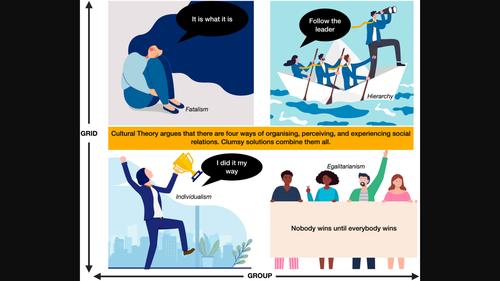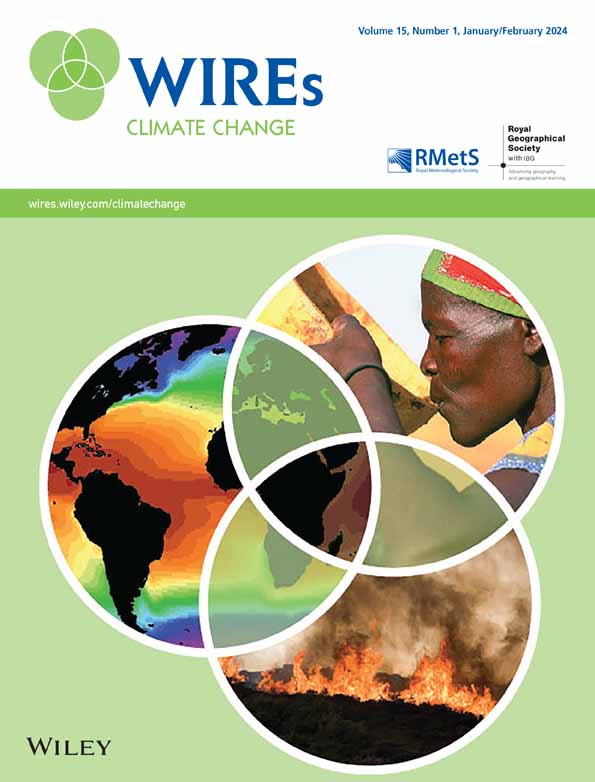Clumsy solutions and climate change: A retrospective
IF 10.3
1区 环境科学与生态学
Q1 ENVIRONMENTAL STUDIES
引用次数: 1
Abstract
In 1989, Steve Rayner chided fellow anthropologists for “fiddling while the world warms.” This was the starting point of a decades‐long application to human‐made climate change of the cultural theory that he had developed with Mary Douglas and Michael Thompson. It culminated in a call to develop “clumsy” solutions for addressing the issue. Since then, the concept of clumsy solutions has been applied, praised, and criticised. To clarify its strengths and weaknesses, I first set out cultural theory and explain how the notion of clumsy solutions was derived from it. I then assess the extent to which this notion has increased our understanding of climate change governance. I do so by breaking up the application of this concept into seven predictions, concerning: (1) the major perspectives among stakeholders on how to resolve climate change; (2) the fate of the 1997 Kyoto Protocol; (3) the feasibility of international emissions trading; (4) the possibility of making renewable energy competitive; (5) the need for domestic governmental action to realize this possibility; (6) the effectiveness of a nonbinding global treaty to combat climate change; and (7) the need to explore adaptation, carbon capture, and geoengineering. I show that these predictions have stood the test of time. Finally, I discuss the roles that the concept of clumsy solutions can play in future climate change governance. This article is written in memory of Steve Rayner, one of the first social scientists to focus on climate change.

笨拙的解决方案和气候变化:回顾
1989年,史蒂夫·雷纳(Steve Rayner)指责人类学家同行“在世界变暖的时候瞎折腾”。这是他与玛丽·道格拉斯和迈克尔·汤普森共同发展的文化理论在长达数十年的时间里应用于人为气候变化的起点。最终,人们呼吁制定“笨拙”的解决方案来解决这个问题。从那时起,笨拙解决方案的概念被应用、赞扬和批评。为了澄清它的优点和缺点,我首先阐述了文化理论,并解释了笨拙解决方案的概念是如何衍生出来的。然后,我评估了这一概念在多大程度上提高了我们对气候变化治理的理解。为此,我将这一概念的应用分为七个预测,涉及:(1)利益相关者对如何解决气候变化的主要观点;(2) 1997年《京都议定书》的命运;(3)国际排放权交易的可行性;(4)可再生能源具有竞争力的可能性;(5)国内政府采取行动实现这一可能性的必要性;(6)应对气候变化的非约束性全球条约的有效性;(7)探索适应、碳捕获和地球工程的必要性。我证明这些预言经受住了时间的考验。最后,我讨论了笨拙解决方案的概念在未来气候变化治理中可能发挥的作用。这篇文章是为了纪念史蒂夫·雷纳,他是最早关注气候变化的社会科学家之一。
本文章由计算机程序翻译,如有差异,请以英文原文为准。
求助全文
约1分钟内获得全文
求助全文
来源期刊

Wiley Interdisciplinary Reviews: Climate Change
METEOROLOGY & ATMOSPHERIC SCIENCES-
CiteScore
20.00
自引率
2.20%
发文量
58
审稿时长
>12 weeks
期刊介绍:
WIREs Climate Change serves as a distinctive platform for delving into current and emerging knowledge across various disciplines contributing to the understanding of climate change. This includes environmental history, humanities, physical and life sciences, social sciences, engineering, and economics. Developed in association with the Royal Meteorological Society and the Royal Geographical Society (with IBG) in the UK, this publication acts as an encyclopedic reference for climate change scholarship and research, offering a forum to explore diverse perspectives on how climate change is comprehended, analyzed, and contested globally.
 求助内容:
求助内容: 应助结果提醒方式:
应助结果提醒方式:


